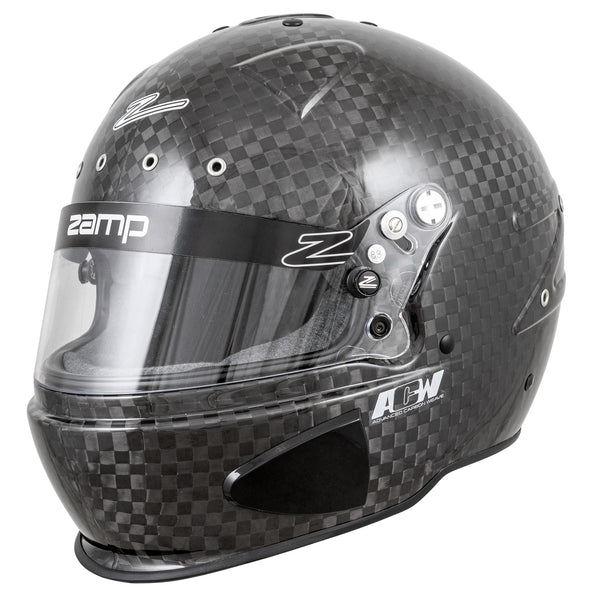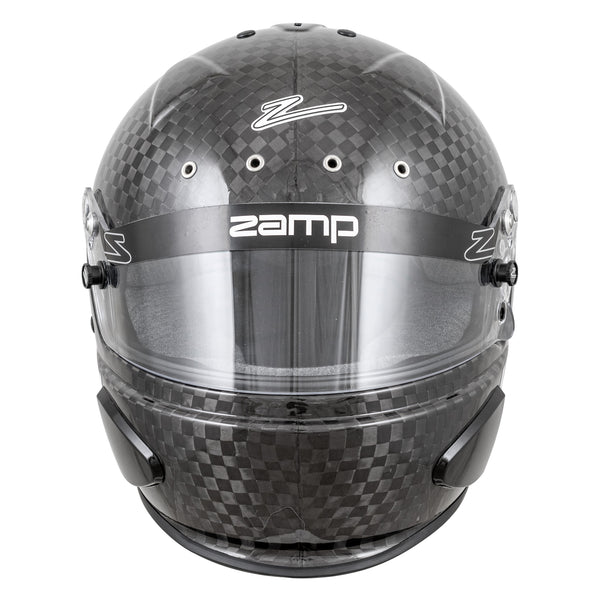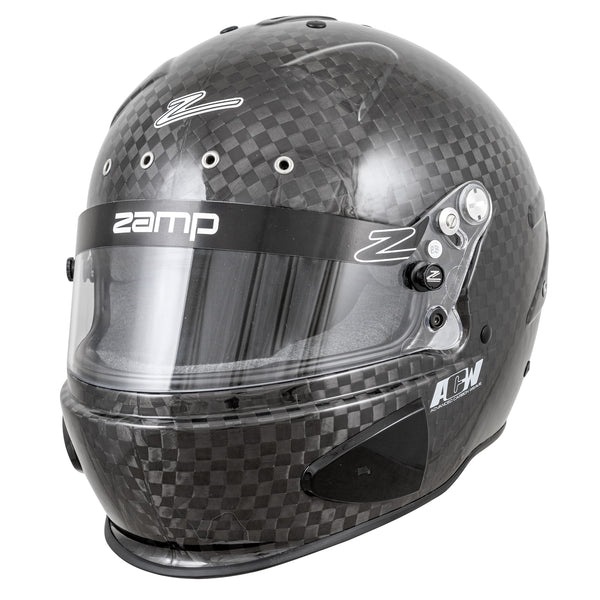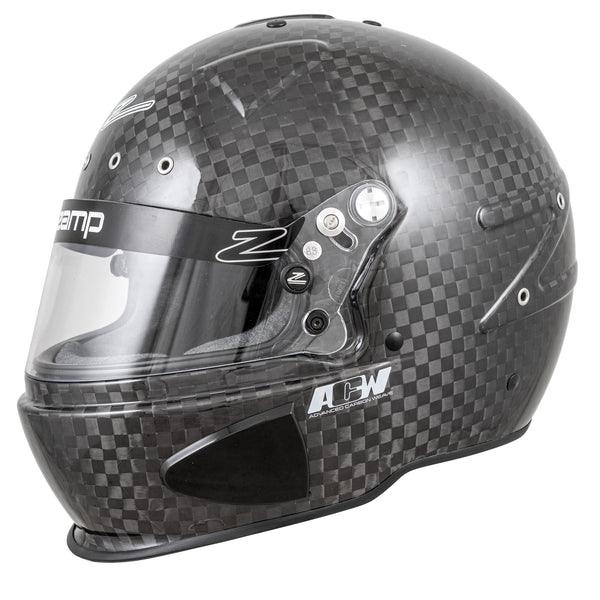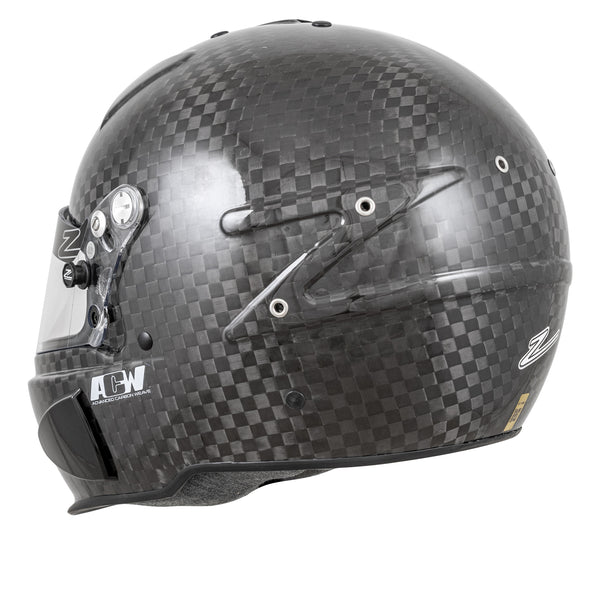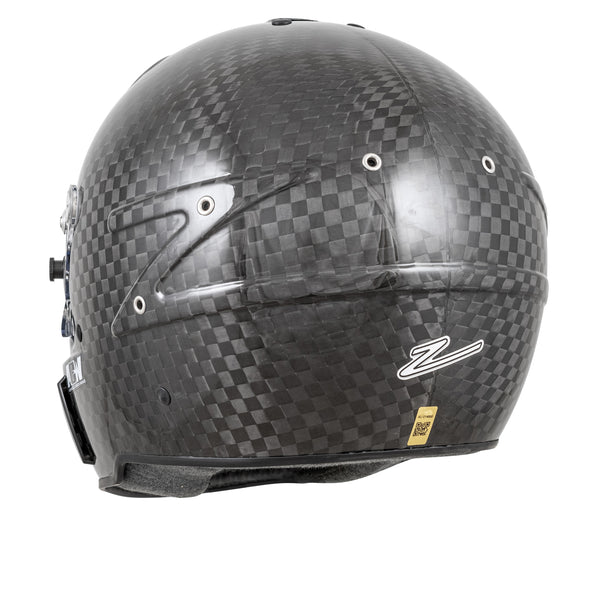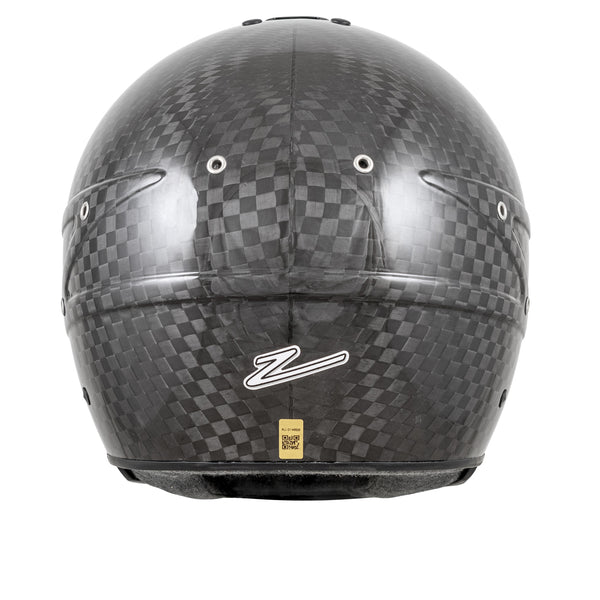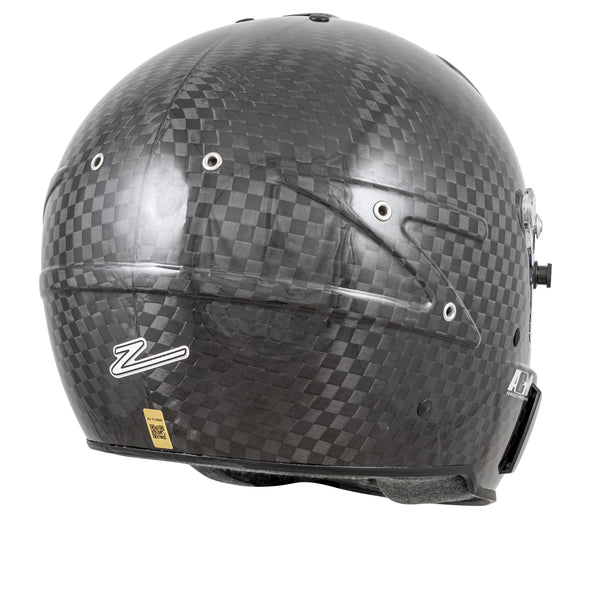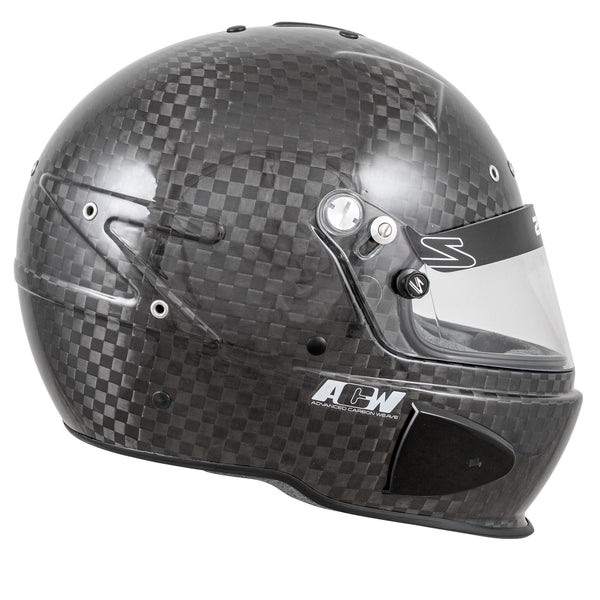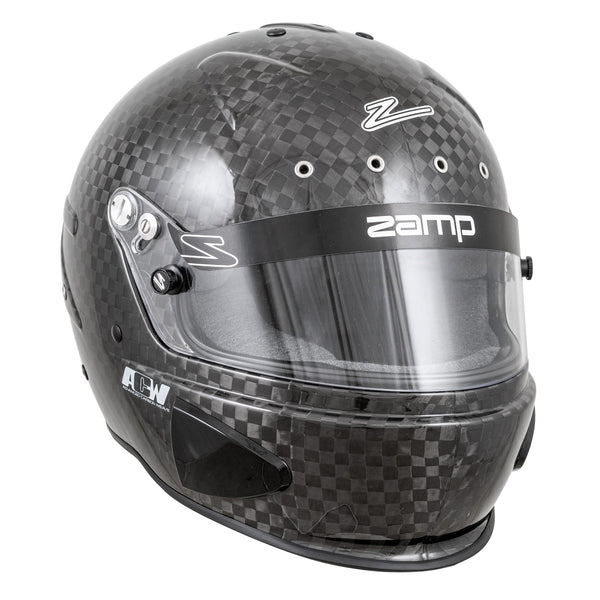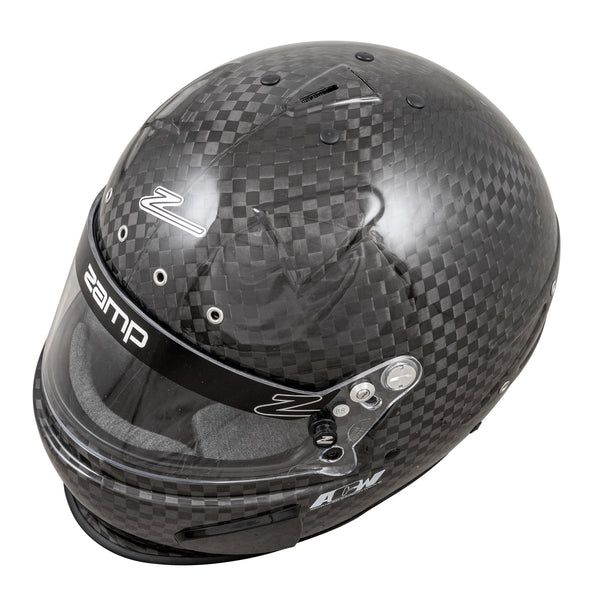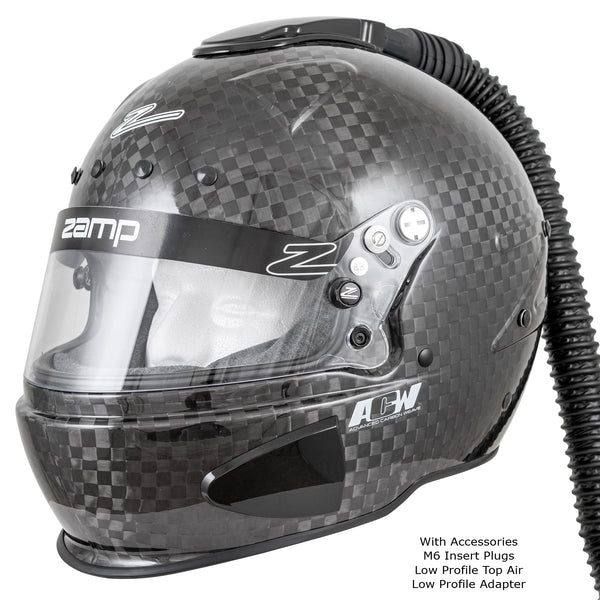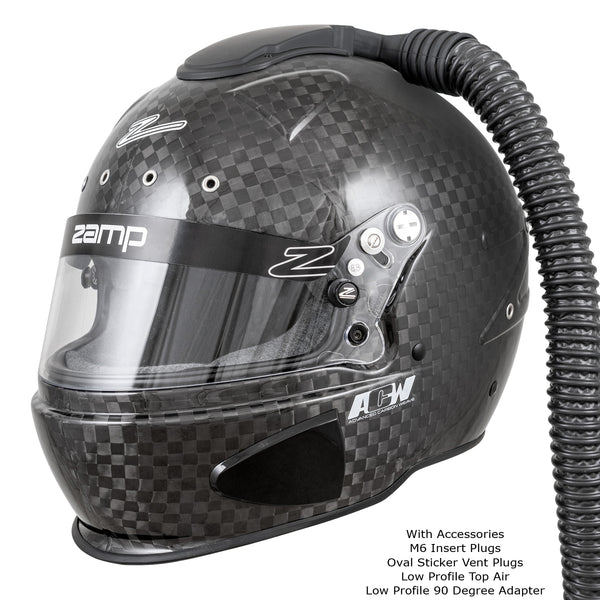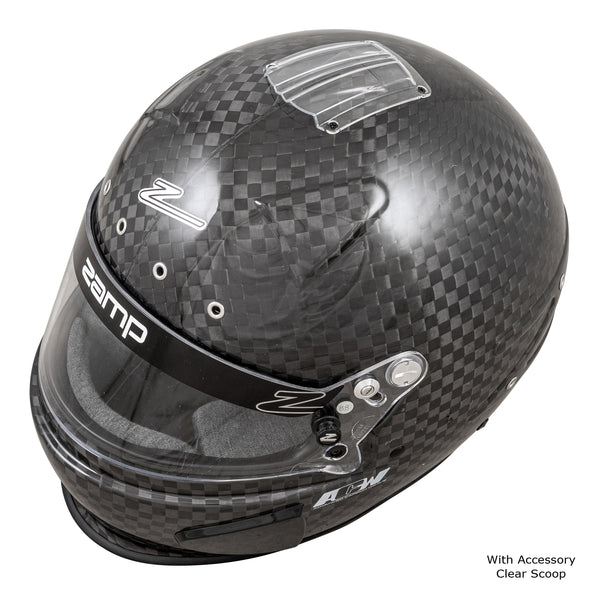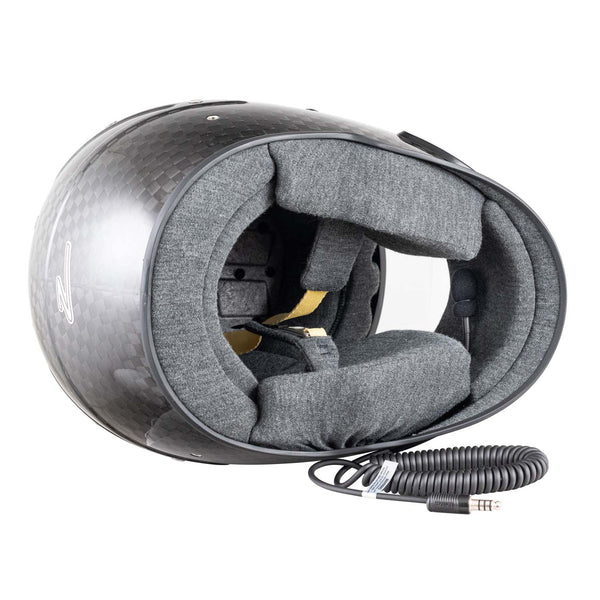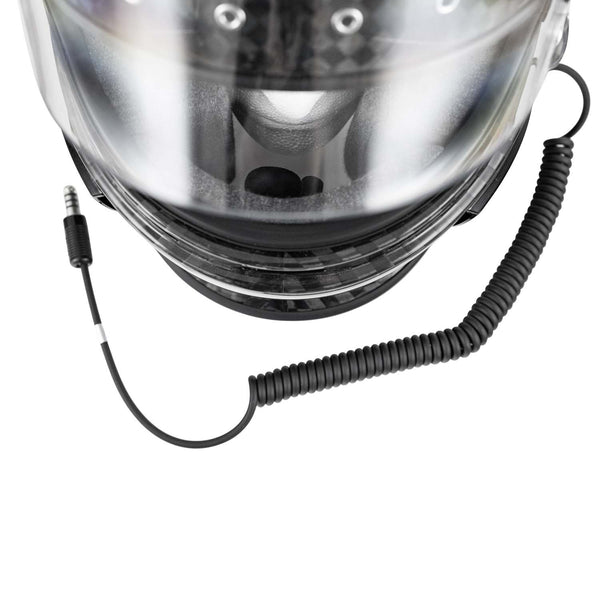8860-2018 is the latest ‘super helmet’ specification from the FIA. In short, these are the highest specification helmets ever developed.
Developed for the uncompromising driver, Zamp is excited to announce the new Super Helmet Series RZ-88C with Advanced FIA 8860-2018 safety standard and leading safety, features, fit, and performance. The RZ-88C Closed Cockpit Gloss Carbon version includes maximum venting on the chin and top with 360 degree air channeling built into the helmet EPS and shell. Clear Antifog Shield gives excellent vision.
Compare to similar helmets costing at least 2X as much. Incredible value in a top spec helmet.
Features Include:
- Advanced Matte Carbon Weave for incredibly lightweight shell
- Configured for Closed Cockpit and Dirt Racing - Shorter Chin Spoiler to give more space and less vents in shell to allow better airflow using Forced Air plus keeps the dirt out in Dirt Racing
- Top Air Inlet allows you to run Natural Air, Forced Air, or Air Plugs
- Plush Removable/Washable Fire Retardant ultra-soft interior with EPS Chin Bar Foam
- Z-24 Series Clear Antifog Shield with Tear Off Posts at 12.125in center posts using banana style Tear Offs
- Communications are easy to install with EPS channels in helmet
- M6 Inserts for Head & Neck Restraint
- Nylon and Canvas Single Helmet Bags Included!
- FIA 8860-2018 without ABP
Under the new FIA 8860-2018 standard all helmets must withstand the following tests:
- Standard impact: Helmet impact at 9.5m/s. Peak deceleration on ‘driver’s head’ shall not exceed 275G.
- Low velocity impact: Helmet impact at 6m/s. Peak deceleration shall not exceed 200G with a maximum average of 180g.
- Low lateral impact: Helmet impact at 8.5m/s. Peak deceleration shall not exceed 275G.
- Crush: A 10kg weight falling 5.1 meters onto helmet. Lateral and longitudinal tests. The transmitted force should not exceed 10 kN.
- Shell penetration: A 4kg impactor dropped onto helmet at 7.7 m/s. Visor penetration: Air rifle fires 1.2g pellet at visor. Pellet must not penetrate the interior of the helmet.
- Visor coating: Transmitter test to ensure colouration and vision is not significantly changed or distorted.
- Retention system: Roll-off test and dynamic test to ensure strength of chin strap and its attachments. Chin guard linear impact: Impact test with full headform at 5.5m/s. The peak deceleration shall not exceed 275G.
- Chin guard crush: Hammer hits chin guard and measures ability to keep impact away from the head. FHR mechanical strength: Test to ensure high strength of attachment points for Frontal Head Restraints.
- Projection and surface friction: Test to ensure helmet surface uniformity and that friction is minimized. Shell surface also subjected to BARCOL hardness test for resistance to penetration.
- Flammability: Helmet exposed to 790 Centigrade/ 1454 Fahrenheit flame; it must self-extinguish once flame is removed.
Understanding Fire Suit Ratings
The following is from the SFI Foundation. Please check with your sanctioning body to ensure compliance before buying any piece of safety equipment.
The driver suit spec 3.2A tests a garment’s fire retardant capabilities. The spec contains a rating system based on the garment’s capability to provide Thermal Protective Performance (TPP) in the presence of both direct flame and radiant heat. The purpose of the TPP is to measure the length of time the person wearing the garment can be exposed to a heat source before incurring a second degree, or skin blistering, burn.
The TPP rating is the product of exposure heat flux and exposure time. The TPP results can be converted to the time before a second degree burn occurs. The higher the garment rating, the more time before a second degree burn. Here are the SFI ratings with the corresponding TPP values and times to a second degree burn:
| SFI Rating | TPP Value | Time to 2nd Degree Burn |
|---|---|---|
| 3.2A/1 | 6 | 3 Seconds |
| 3.2A/3 | 14 | 7 Seconds |
| 3.2A/5 | 19 | 10 Seconds |
| 3.2A/10 | 38 | 19 Seconds |
| 3.2A/15 | 60 | 30 Seconds |
| 3.2A/20 | 80 | 40 Seconds |
Another test included in the spec is the after-flame test. When a direct flame is applied the fabric and them removed, the time it takes the material to self-extinguish is measured. This is called after-flame time and it must be 2.0 seconds or less for the layer of fabric to pass. Cuff material is also subjected to this test.
The flammability test evaluates single layers of fabric only. The individual layers of a multiple-layer suit are tested for after-flame time separately.
The TPP test can be used to evaluate multiple-layer configurations as well as single-layer fabrics. The samples used in testing are assembled with the identical fabrics and layer order as an actual driver suit.
Other tests required by Spec 3.2A include thread heat resistance, zipper heat resistance, and multiple layer thermal shrinkage resistance.

